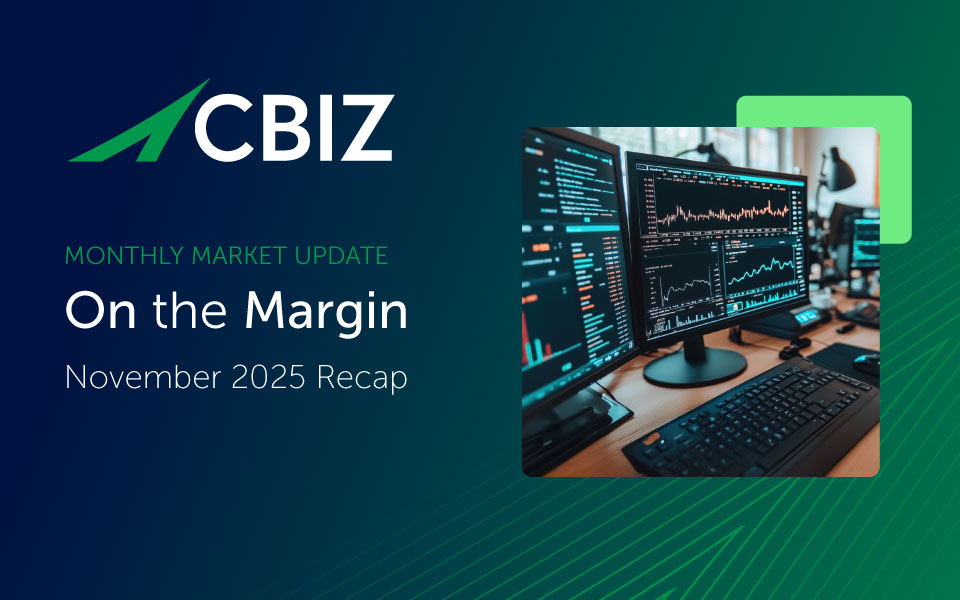The first few months of 2025 was a period when economic data seemed inconsequential to financial markets and to Main Street. From the declaration of the new tariff policy on April 2nd to the ninety-day pause announcement on April 9th, world leaders scrambled to negotiate with the United States. For now, we have a broad 10% tariffs on all imports and a 145% tariff on Chinese goods. This policy introduces a seismic shift in global relationships that carries numerous implications for international trade. As we look ahead, we must consider the potential ripple effects of retaliation, global supply chain disruption, and price increases, all of which render the future highly uncertain.
An Indictment of Globalization
The use of steep tariffs is a definitive step away from the norm of the last several decades. They symbolize a deglobalization zeitgeist that gained momentum in recent years and highlights a complex set of frustrations. In particular, trade with China has been a source of grievance for American companies, and the supply chain disruption during the COVID-19 pandemic shed light on the downside of globalization. Finally, the formula used by the Trump administration to calculate the “reciprocal” tariffs reveals that the real objection is not any tariff levied on U.S. goods; rather, it is the U.S.’s consistent trade deficit with many nations, a side effect of a globalized trading platform and of the U.S. dollar dominance.
Monetary Policy Challenges
Tariffs are effectively a tax burden carried by the buyer of the transaction. Consider the 145% tariffs on Chinese imports. According to the U.S. Census Bureau, the U.S. imported $439 billion worth of goods from China in 2024, with names like Walmart, Amazon, and Apple (maybe Apple is getting an exemption for now) expected to be impacted severely. Now it becomes a business decision for U.S. companies on whether the tax is passed along to buyers. With a draconian tariff rate, price hikes are only a partial worry; final consumers, both institutions and individuals, would be less likely to make the purchases at all. Under these circumstances, the Federal Reserve is staring at slower economic growth, possibly a recession in a higher price regime, where interest rate policy is less straight forward.
Financial Markets in Search for Stability
A 90-day extension on the tariff policy implementation only means the postponement of certainty. A significant change in trade policy is disruptive in and of itself, but the uncertainty around that policy is also disorderly for the financial markets. Public equity markets struggled to find stability since “Liberation Day”, and for the first time since 2022, credit spreads widened considerably.1 The move in the credit markets stresses the cash flow impact of these tariffs on businesses, and the tariff war with China is expected to be reflected in future borrowing costs.
Unchartered Territory
As the First 100 Days of the Trump Administration Nears a Close, we are in Unchartered Territory. The global economy, with its complex web of trade and relationships, is a massive ship and introduction of changes requires gentle and patient maneuvering. Instead, we have implemented a policy shock to an established global system, in some ways similar to the sudden impact of the economic shutdown during the COVID-19 pandemic. Unlike the pandemic, the world could conceptually “negotiate” out of this situation, but even if the U.S. achieves the desired outcome, some things, namely trust, may remain broken. This is the immeasurable cost of a fast-track trade deal, and healing from it may be the longer-term challenge ahead of us.
- Bloomberg. Investment Grade spreads widened to 119 bps as of April 8, 2025; High yield spreads widened to 453 bps.
Note: This piece was written as of April 9, 2025
© Copyright CBIZ, Inc. All rights reserved. Use of the material contained herein without the express written consent of the firms is prohibited by law. This publication is distributed with the understanding that CBIZ is not rendering legal, accounting or other professional advice. The reader is advised to contact a tax professional prior to taking any action based upon this information. CBIZ assumes no liability whatsoever in connection with the use of this information and assumes no obligation to inform the reader of any changes in tax laws or other factors that could affect the information contained herein. Material contained in this publication is informational and promotional in nature and not intended to be specific financial, tax or consulting advice. Readers are advised to seek professional consultation regarding circumstances affecting their organization.
“CBIZ” is the brand name under which CBIZ CPAs P.C. and CBIZ, Inc. and its subsidiaries, including CBIZ Advisors, LLC, provide professional services. CBIZ CPAs P.C. and CBIZ, Inc. (and its subsidiaries) practice as an alternative practice structure in accordance with the AICPA Code of Professional Conduct and applicable law, regulations, and professional standards. CBIZ CPAs P.C. is a licensed independent CPA firm that provides attest services to its clients. CBIZ, Inc. and its subsidiary entities provide tax, advisory, and consulting services to their clients. CBIZ, Inc. and its subsidiary entities are not licensed CPA firms and, therefore, cannot provide attest services.















